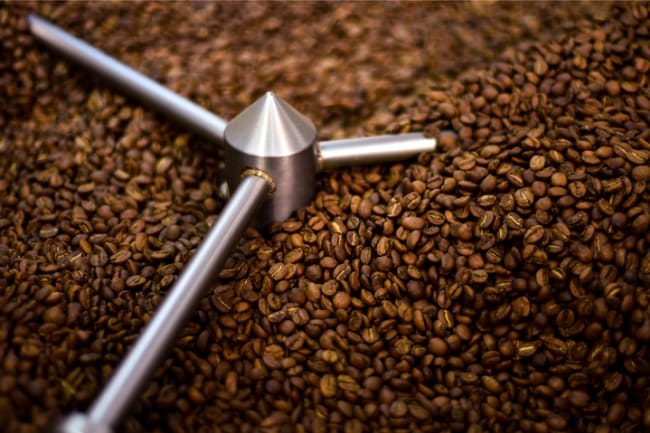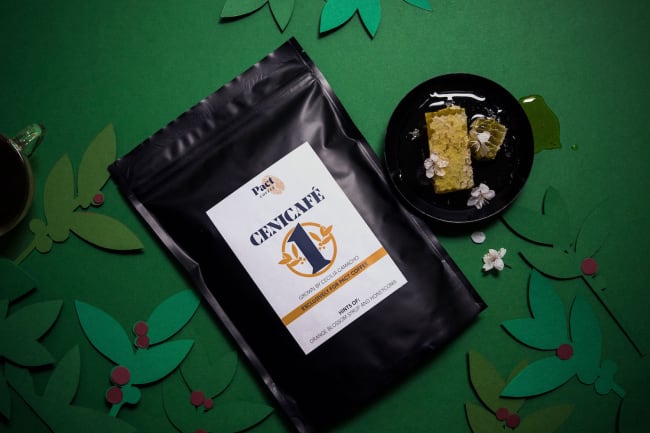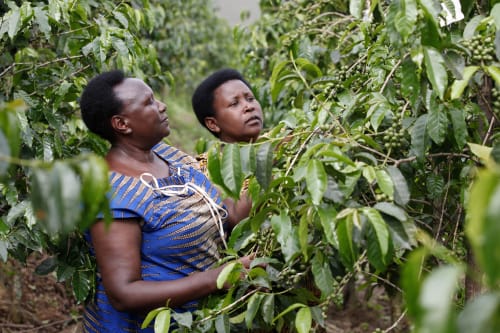We know you can’t put a price (or a mark out of 100) on that first sip of coffee on a cold Monday morning… but a lot of people, as it happens, can!
The Specialty Coffee Association of America (SCA) is one of the industry’s benchmark scoring systems for ranking coffees, as we’ve explained here, and informs most green coffee competitions around the world.
But there is one notable exception – and that’s the ‘Colombia, Land of Diversity’ contest (which you may well have heard us chatting about!).
How Head of Coffee Will helped begin the ‘Land of Diversity’ competition
Starting around four years ago, ‘Land of Diversity’ began not long after Will started sourcing direct from origin for Pact Coffee. On his first trip to Colombia, he met the San Isidro group (an group of farms including Buenos Aires, El Cairo, Casa Loma) with FNC representative Esteban.
There’s all sort of coffee competitions going on across the globe, but the San Isidro group wanted to create their own – focused on quality. And talking to Esteban, Will volunteered some useful insights (read more below)… and has been Head Judge every year since!
Pact Coffee’s perspective on coffee scoring
The key thing that Will brought to this competition (apart from his ability to drink 40 coffees in a row!) was a new way to look at coffee scoring.
Where the SCA protocol is to generate scores out of 100, with coffees marked (in theory) out of ten in a total of ten different categories, saw two problems with the usual way of doing things:
- Even though the scale is theoretically out of ten for each section, the SCA only actually scores roughly between 6.5-8 – which means the ‘out of 100’ scoring system automatically inflates every coffee’s score, good or bad!
- A coffee might score high overall, but how do buyers know it’s right for their market? A coffee that scores high because of its incredible acidity, despite ranking relatively low for body, won’t taste good to North American customers – because body matters there!
Will’s solution when it comes to scoring Pact coffees internally (as we stick with the SCA scoring on the website to stay industry-standard) was a five- point scale, in several different categories: flavour, mouthfeel, sweetness, body, balance, acidity. The score from each category isn’t added up to form a totally – instead each mark is considered. High for mouthfeel and balance, but low for acidity and body? That’s cause for concern. All moderately high? Good news!
Esteban, watching Will cup the San Isidro coffees using this scoresheet, saw that it could be useful for this new competition – and Will helped him develop it into what is now the ‘Colombia, Land of Diversity’ scoring system.
‘Colombia, Land of Diversity’ Spring 2019
After a whopping 680-odd lots were bought from producers at the price of the day, plus a premium as motivation, they were cupped in local Almacafés by specialists – checking whether they have potential to be speciality grade. Next, a team of cuppers narrows them down until there were 47 ready to be judged at the contest.
Will and a team of judges cupped them down to the 20 best coffees according to SCA scoring, before using the Pact-inspired ‘Colombia, Land of Diversity’ scoring to find the most oustanding coffee in five categories – exotic (interplay between flavour and taste), acidic, body, mildness and balance.
Many of the coffees from this competition will also feature in an auction. And the great thing about the new scoring process means that buyers don’t just buy a high-scoring coffee once, but never again because it didn’t suit the market. They can choose to get a high-scoring coffee that’s right for their customers, meaning they’ll know to go back to that farmer next time for coffee of the same quality and type – forging a long-term relationship!






